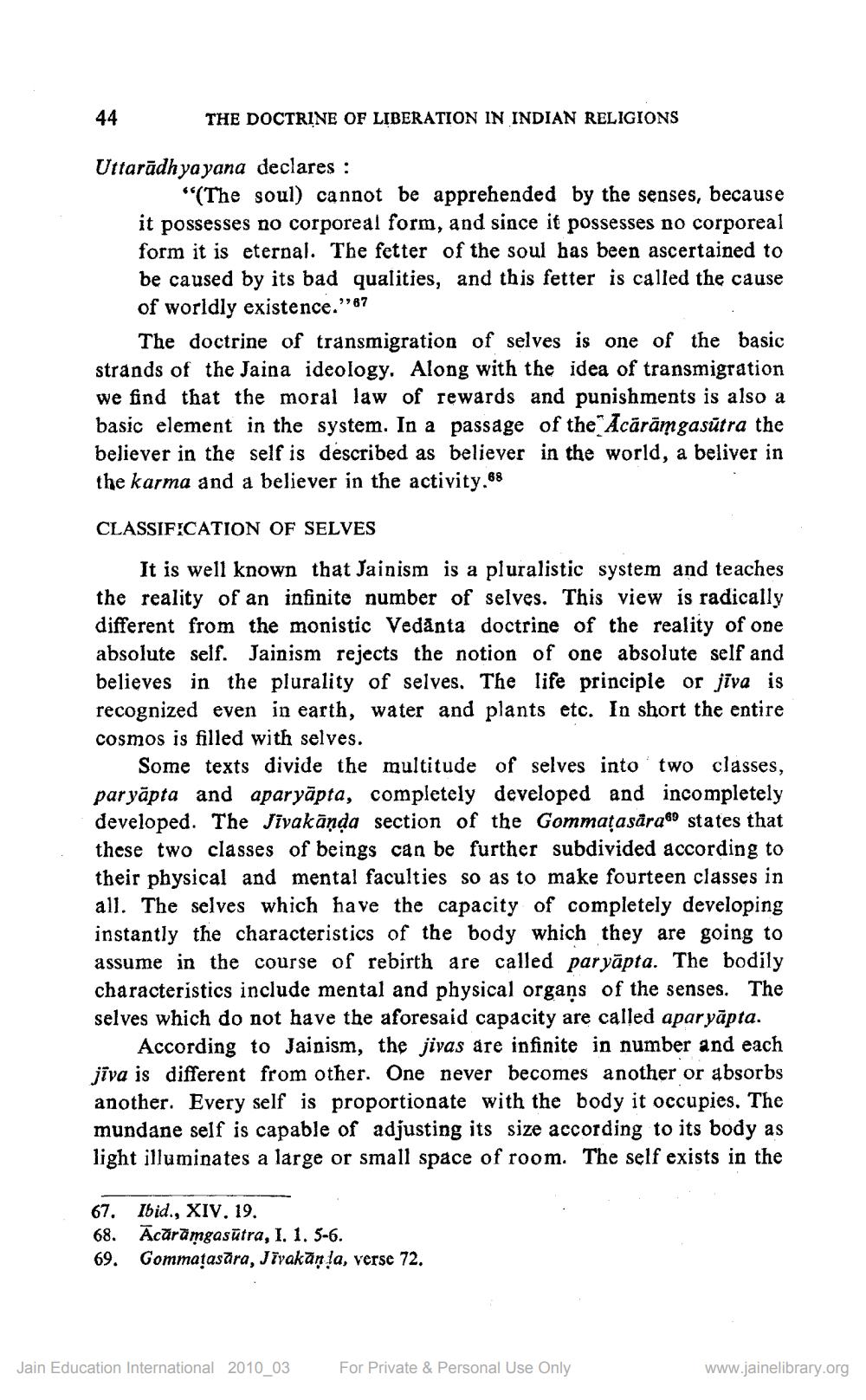________________
44
THE DOCTRINE OF LIBERATION IN INDIAN RELIGIONS
Uttarādhya yana declares :
"(The soul) cannot be apprehended by the senses, because it possesses no corporeal form, and since it possesses no corporeal form it is eternal. The fetter of the soul has been ascertained to be caused by its bad qualities, and this fetter is called the cause of worldly existence."87
The doctrine of transmigration of selves is one of the basic strands of the Jaina ideology. Along with the idea of transmigration we find that the moral law of rewards and punishments is also a basic element in the system. In a passage of the Acārāmgasūtra the believer in the self is described as believer in the world, a beliver in the karma and a believer in the activity.68
CLASSIFICATION OF SELVES
It is well known that Jainism is a pluralistic system and teaches the reality of an infinite number of selves. This view is radically different from the monistic Vedanta doctrine of the reality of one absolute self. Jainism rejects the notion of one absolute self and believes in the plurality of selves. The life principle or jiva is recognized even in earth, water and plants etc. In short the entire cosmos is filled with selves.
Some texts divide the multitude of selves into two classes, paryāpta and aparyāpta, completely developed and incompletely developed. The Jivakānda section of the Gommatasara69 states that these two classes of beings can be further subdivided according to their physical and mental faculties so as to make fourteen classes in all. The selves which have the capacity of completely developing instantly the characteristics of the body which they are going to assume in the course of rebirth are called paryāpta. The bodily characteristics include mental and physical organs of the senses. The selves which do not have the aforesaid capacity are called apar yāpta.
According to Jainism, the jivas are infinite in number and each jīva is different from other. One never becomes another or absorbs another. Every self is proportionate with the body it occupies. The mundane self is capable of adjusting its size according to its body as light illuminates a large or small space of room. The self exists in the
67. Ibid., XIV. 19. 68. Ācārāmgasūtra, I. 1. 5-6. 69. Gommatasara, Jivakan la, verse 72.
Jain Education International 2010_03
For Private & Personal Use Only
www.jainelibrary.org




